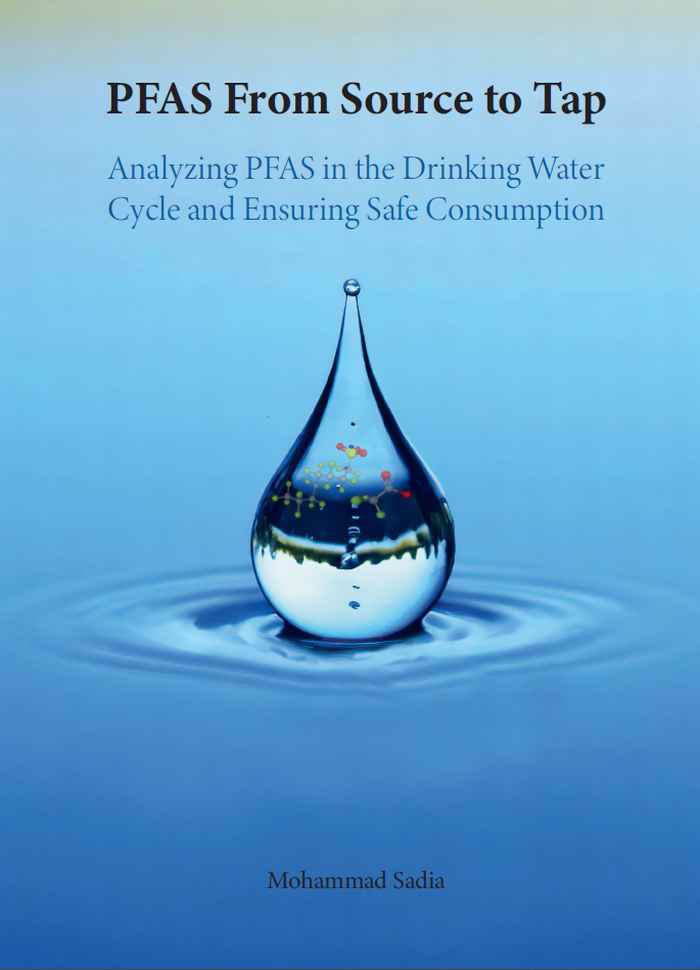PhD defence ceremony by Mohammad Sadia
- Date
- 11 December 2024
- Time
- 13:00
- Location
- Agnietenkapel

Ensuring the availability of drinking water that is both safe and clean is imperative for protecting public health and promoting overall well-being. However, this essential resource is under growing threats from variety of pollutants, including per- and polyfluoroalkyl substances (PFAS), which pose significant risks to public health and environmental integrity. PFAS are a diverse group of synthetic chemicals that are widely used in consumer products and industrial processes, and getting more global attention due to their ubiquitous detection in the environment and in human. PFAS present unique challenges due to their persistence and potential health and environmental impact, necessitating comprehensive research and effective mitigation strategies to protect drinking water quality.
This dissertation addresses the pressing need to understand PFAS in the drinking water cycle and to mitigate the risks associated with PFAS contamination in drinking water, highlighting the importance of water source protection and proactive measures to ensure the provision of safe and clean drinking water for present and future generations.
The research objectives are structured around four key goals.
The first goal was the development of analytical techniques tailored to detect trace levels of PFAS in drinking water. This method achieves a quantification limit at low concentration ranges (pg/L), facilitating sensitive analysis of PFAS in drinking water and their sources. The method covers a diverse range of PFAS compounds from ultrashort-chain to long-chain PFAS, along with a wide range of PFAS precursors and the possibility to discern linear and branched PFAS. This comprehensive methodology ensures accurate and sensitive detection, as introduced to improve target analysis (Chapter 2). Additionally, optimization of feature detection algorithms in the workflow of the non-target analysis was introduced (Chapter 6).
A second goal was to investigate the presence of PFAS in drinking water and their sources of origin to discern distribution patterns between different water sources. Notably, the contamination of groundwater with polar ultra-short-chain PFAS, including TFA (trifluoroacetic acid), raises concerns regarding the level of contamination in these vital sources. Insights gained from this investigation contribute to understanding the risks posed to human health via drinking water (Chapter 2).
A third goal was to assess the influence of historical PFAS contamination on the integrity of drinking water production. This involves studying the impact of past contamination sources such as firefighting practice areas and former landfills on groundwater quality and subsequent drinking water safety, and to follow their fate over a decade (Chapter 3). Proactive measures, including soil remediation, are essential to mitigate contamination risks and protect drinking water sources.
Lastly, the evaluation of treatment processes for PFAS removal in drinking water production reveals a disparity in removal efficiencies across treatment locations, as outlined in Chapter 2. This underscores inherent challenges related to current treatment technologies, particularly evident in the limited efficacy of granular activated carbon (GAC) treatment in PFAS removal. Chapter 4 delves into an in-depth investigation of GAC's performance, emphasizing the imperative for improvement of the current treatment approaches to achieve a drinking water below safe level. Additionally, while reverse osmosis (RO) emerges as a promising solution for PFAS removal, Chapter 5 explores potential concerns regarding PFAS leaching from membrane materials during RO processes. These findings underscore the complexity of PFAS removal processes and highlight the critical need for robust, effective, and sustainable treatment strategies in safeguarding drinking water quality.
Through these objectives, the research aims to provide a comprehensive understanding of PFAS contamination in drinking water cycle and their risk to human health. The synthesis of earlier chapters, as presented in Chapter 7, elucidates the key discoveries and insights from the research, and offers an outlook and future perspective. By outlining potential pathways for further exploration and action in addressing PFAS contamination in drinking water, the synthesis aims to guide future research directions and inform policy considerations to downstream and upstream protection of drinking water.
In conclusion, this research represents a forward step in our understanding of PFAS contamination in drinking water, shedding light on its widespread presence and potential risks to human health. By investigating the occurrence, origins, removal efficiencies, and historical influences of PFAS in drinking water sources, this study offers valuable insights that are crucial for informing policymakers and stakeholders. The findings underscore the need for effective mitigation strategies to safeguard public health and the environment from the detrimental effects of PFAS exposure. Moreover, this research highlights the critical role of interdisciplinary collaboration in tackling this multifaceted environmental and public health challenge. By bringing together expertise from diverse fields such as environmental science, chemistry, risk assessment, engineering, and policy, we can develop comprehensive solutions and implement proactive measures to mitigate PFAS contamination and ensure access to safe and clean drinking water for all.
